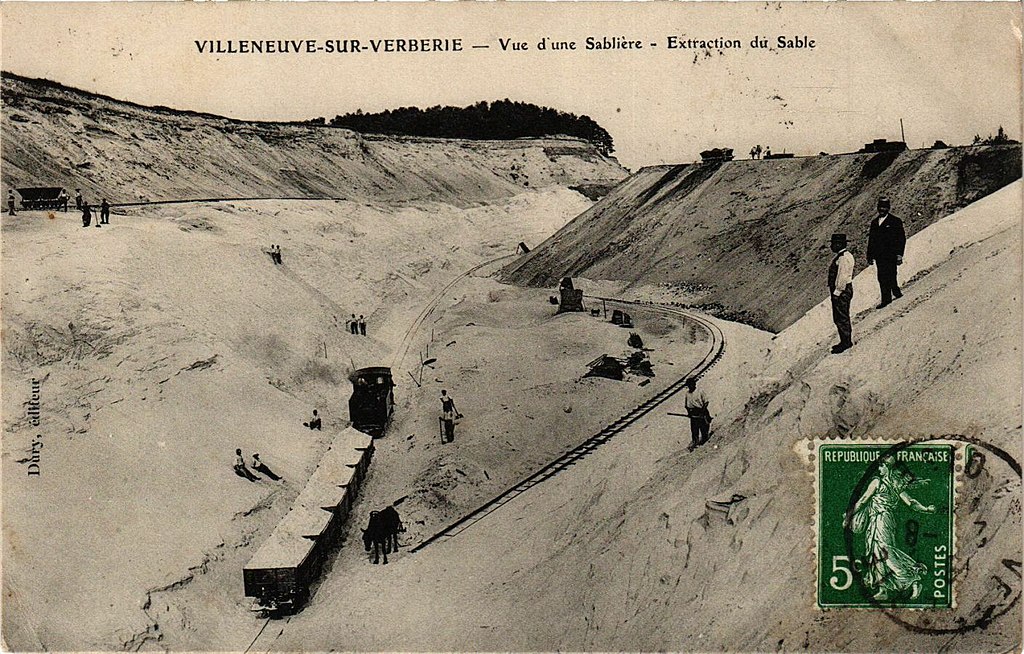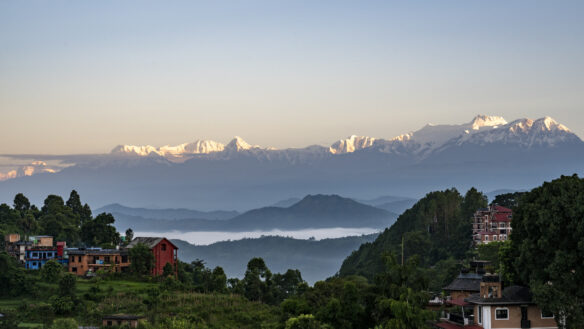Excerpt:
How ‘Yellow Gold’ Became a Resource Under Pressure…Sand is the second most consumed resource in the world after fresh water. Substance of our concrete civilization, its demand will intensify in the years to come. A situation that generates geopolitical tensions.
To the east of Les Sables-d’Olonne (Vendée), trucks come to the Sablimaris sandpit to collect their cargo: 30 tonnes of sand per skip. The line is uninterrupted. Sand is the essential component of concrete . The site manager, Alain Laurent, guides us through the blond pyramids. His voice covers the roar of the sieve, a machine that separates the fine sand from the pebbles. A few shells float in the golden swirls. This sand comes from the seabed, sucked up by the two French sandpits Stellamaris and André L crisscrossing the Atlantic. Les Sables-d’Olonne and some of the towns of Vendée are built on this sand.
Silky, it slips between the fingers. The rustling of the grains sings the ephemerality of things. Invisible within an infinity of similar ones, the grain is the symbol of the flight of time. Time eats away at life. Sand is the dust of lost time. On the beaches, vacationers leave their mark. Twice a day, the tide erases the steps, the wind carries away the traces. Is the human adventure a sandcastle?
Yet sand is not ordinary. A single grain, it seems, is enough to jam the machine. Ancient man wrote his first thoughts on the ground. Archimedes drew his geometry on the sand. A Roman soldier walks over his drawings: “You disturb my circles,” says Archimedes. The sword is drawn. The philosopher’s head rolls in the sand, which soaks up the blood, like that of the heifers sacrificed to the chthonic gods in Antiquity. Similarly, it is on the sand that Remus and Romulus trace the location of Rome. It is on the sand of the amphitheater that the first tragedians summarize the human condition. The arena (from the Latin arena, sand) where the gladiator fights took place served as a television and a spectacle. Besides, isn’t a screen a silica surface? An age-old gesture is taking place on the Internet: you erase a page with a click, just as you would sweep away an inscription in the sand.
Soldiers of modern armies continue to do their own combat preparation in a sandbox. Thus, the ultra-technical military institution continues the gesture of Archimedes. Sand, humanity’s writing desk.
Concrete has been the material of choice for architects for a century. The idea can finally take shape, freed from the determinism of matter. Sand is the perfect metaphor for capitalist value: fluid, modular, transportable. A symbol of our liquid life. In Les Sables-d’Olonne , “a country without stones and without fresh water”, as the mayor, Yannick Moreau, reminds us, the arrival of concrete heralded the change. The city with such a poetic name has adopted a uniform architecture. Too bad for the premature aging of the building, which has become a commodity that is all the more profitable because its renewal rate is rapid.
Construction is by far the sector that consumes the most sand. But our addiction goes further. Sand is used in the manufacture of paper, cosmetics, laundry detergents, plastics, paints, tires and a multitude of other products. Silicon is the basis for the manufacture of microprocessors, without which the digitalization of the world would not have happened. Sand is the raw material for dematerialization.
Man does not think about sand any more than he does about the air he breathes, and yet he cannot live without it. It is the most consumed natural resource in the world, after fresh water. More than 50 billion tons are extracted each year, making it the world’s leading mining industry. Sand, the new yellow gold…
(French to English translation by Google)









